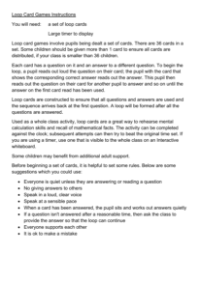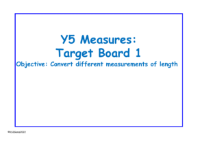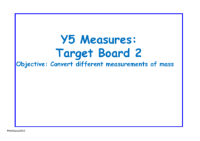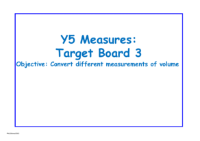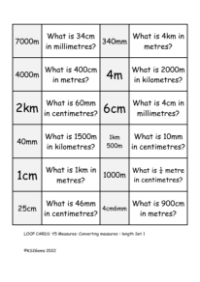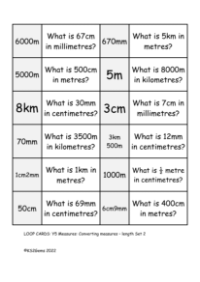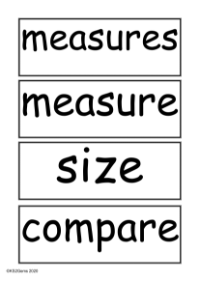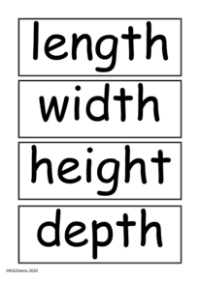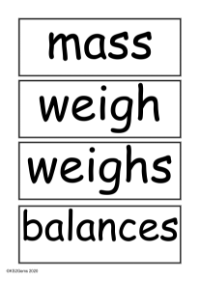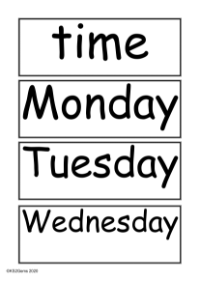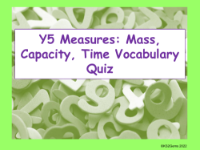Vocabulary - Measures: Capacity
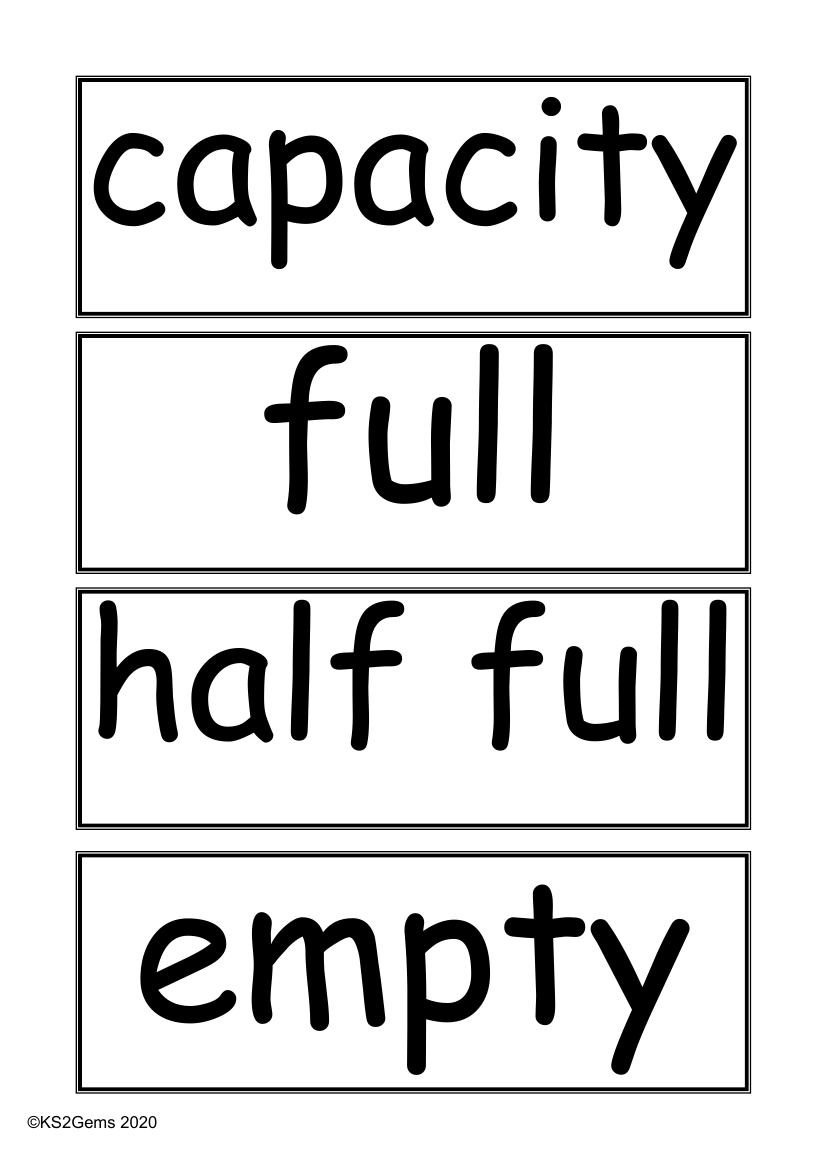
Maths Resource Description
The vocabulary for measures of capacity is a fundamental part of the mathematics curriculum, particularly relevant for Key Stage 2 students. The term 'capacity' refers to the maximum amount that a container can hold. Understanding this concept is crucial when discussing how much liquid a container can contain. Words like 'full' and 'half full' describe a container's state in relation to its capacity, with 'full' indicating that it is at maximum capacity, and 'half full' signifying it is filled to 50% of its capacity. Conversely, 'empty' denotes that the container holds nothing.
Further terms related to capacity include 'litre' (l) and 'millilitre' (ml), which are units of measurement for volume. A 'litre' is a standard metric unit for measuring capacity, often used for larger quantities of liquid, while a 'millilitre' is a much smaller unit, suitable for precise measurements. 'Half-litre' is self-explanatory, representing half the volume of a litre. Containers come in various forms, such as bottles, jugs, or 'cylinders', and they can be used to measure or hold liquids. Other units of capacity that might be encountered include the 'pint' and the 'gallon', which are used in different systems of measurement. Understanding these terms and their applications is essential for students as they explore the concept of capacity in their studies.
